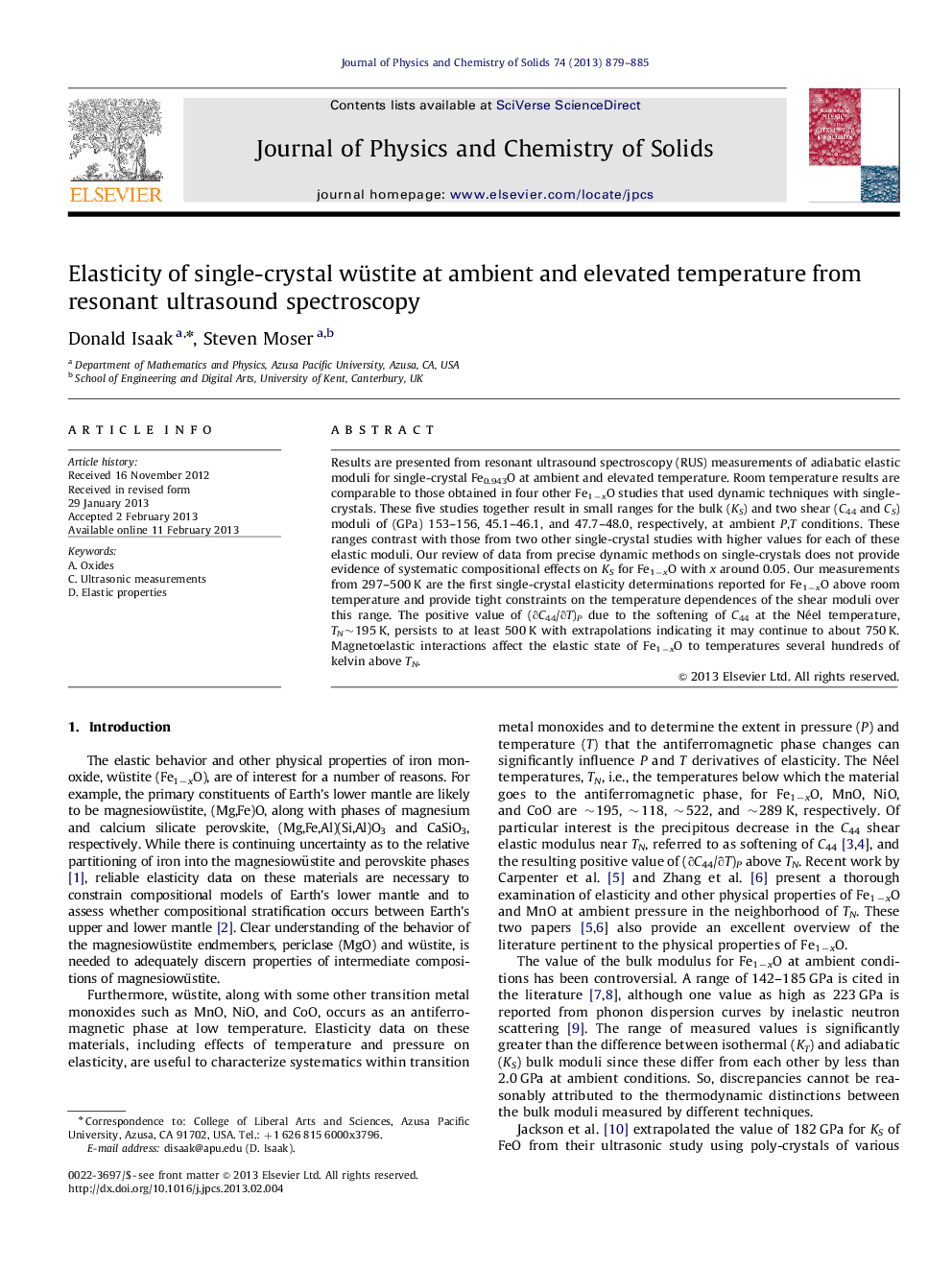| Article ID | Journal | Published Year | Pages | File Type |
|---|---|---|---|---|
| 1516442 | Journal of Physics and Chemistry of Solids | 2013 | 7 Pages |
Results are presented from resonant ultrasound spectroscopy (RUS) measurements of adiabatic elastic moduli for single-crystal Fe0.943O at ambient and elevated temperature. Room temperature results are comparable to those obtained in four other Fe1−xO studies that used dynamic techniques with single-crystals. These five studies together result in small ranges for the bulk (KS) and two shear (C44 and CS) moduli of (GPa) 153–156, 45.1–46.1, and 47.7–48.0, respectively, at ambient P,T conditions. These ranges contrast with those from two other single-crystal studies with higher values for each of these elastic moduli. Our review of data from precise dynamic methods on single-crystals does not provide evidence of systematic compositional effects on KS for Fe1−xO with x around 0.05. Our measurements from 297–500 K are the first single-crystal elasticity determinations reported for Fe1−xO above room temperature and provide tight constraints on the temperature dependences of the shear moduli over this range. The positive value of (∂C44/∂T)P due to the softening of C44 at the Néel temperature, TN∼195 K, persists to at least 500 K with extrapolations indicating it may continue to about 750 K. Magnetoelastic interactions affect the elastic state of Fe1−xO to temperatures several hundreds of kelvin above TN.
► New RUS measurements of elasticity on Fe0.943O at ambient and elevated T are presented. ► No clear evidence is found for systematic compositional effects on KS for Fe1−xO. ► Measurements to 500 K are the first single-crystal elasticity data for Fe1−xO above RT. ► Tight constraints are obtained for the temperature dependences of the shear moduli. ► The anomalous positive value of (∂C44/∂T)P persists to at least 500 K and possibly as high as 750 K.
